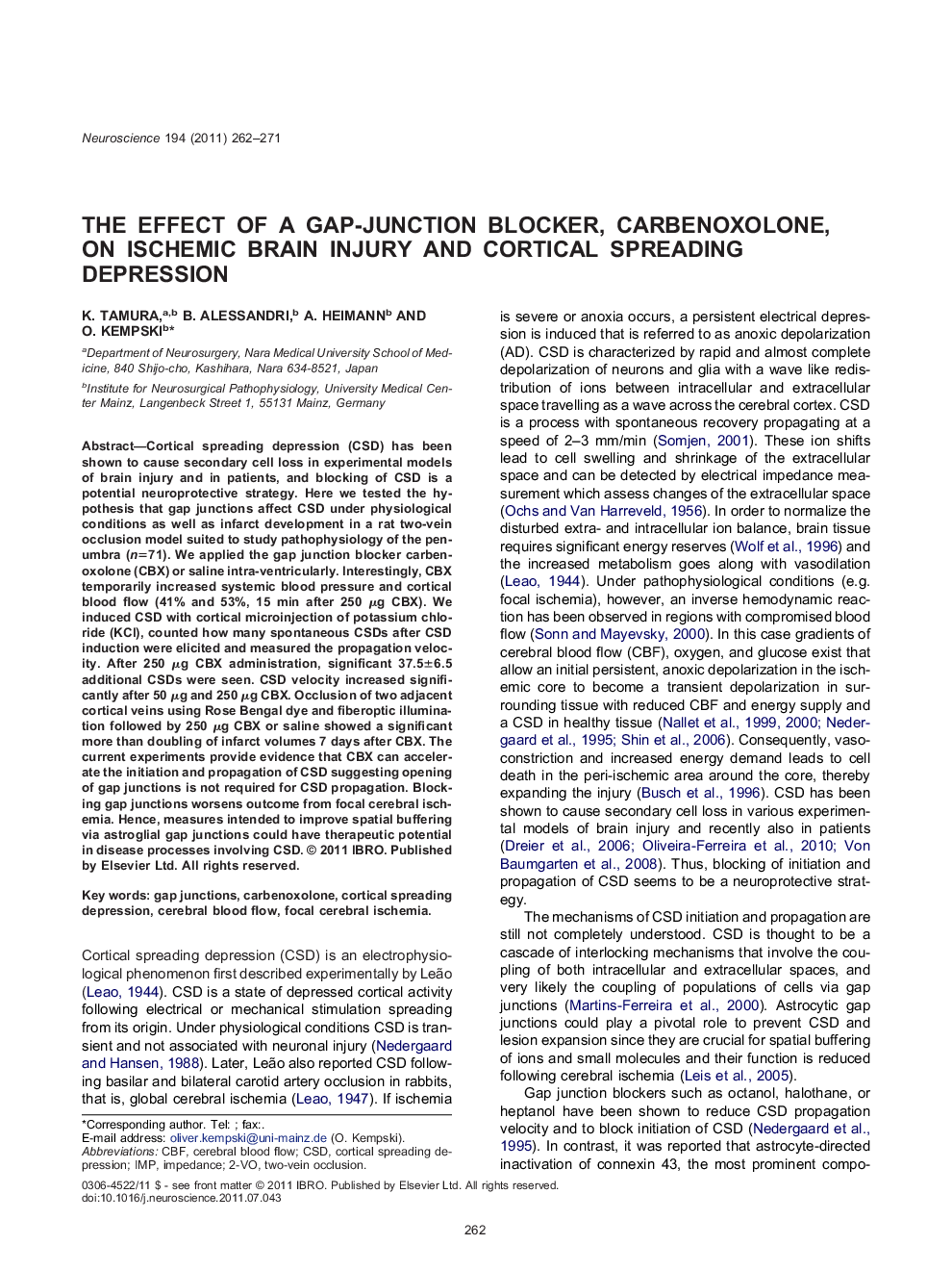| Article ID | Journal | Published Year | Pages | File Type |
|---|---|---|---|---|
| 4338817 | Neuroscience | 2011 | 10 Pages |
Cortical spreading depression (CSD) has been shown to cause secondary cell loss in experimental models of brain injury and in patients, and blocking of CSD is a potential neuroprotective strategy. Here we tested the hypothesis that gap junctions affect CSD under physiological conditions as well as infarct development in a rat two-vein occlusion model suited to study pathophysiology of the penumbra (n=71). We applied the gap junction blocker carbenoxolone (CBX) or saline intra-ventricularly. Interestingly, CBX temporarily increased systemic blood pressure and cortical blood flow (41% and 53%, 15 min after 250 μg CBX). We induced CSD with cortical microinjection of potassium chloride (KCl), counted how many spontaneous CSDs after CSD induction were elicited and measured the propagation velocity. After 250 μg CBX administration, significant 37.5±6.5 additional CSDs were seen. CSD velocity increased significantly after 50 μg and 250 μg CBX. Occlusion of two adjacent cortical veins using Rose Bengal dye and fiberoptic illumination followed by 250 μg CBX or saline showed a significant more than doubling of infarct volumes 7 days after CBX. The current experiments provide evidence that CBX can accelerate the initiation and propagation of CSD suggesting opening of gap junctions is not required for CSD propagation. Blocking gap junctions worsens outcome from focal cerebral ischemia. Hence, measures intended to improve spatial buffering via astroglial gap junctions could have therapeutic potential in disease processes involving CSD.
▶Gap junctions are involved in spatial buffering and their inhibition with carbenoxolone facilitates generation of cortical spreading depression (CSD) events and increases velocity of CSD waves. ▶Blocking gap junctions also worsens outcome from focal cerebral ischemia, indicating that spatial buffering via gap junctions is protective in the ischemic penumbra. ▶Measures intended to improve spatial buffering via astroglial gap junctions could have therapeutic potential in disease processes involving CSD.
